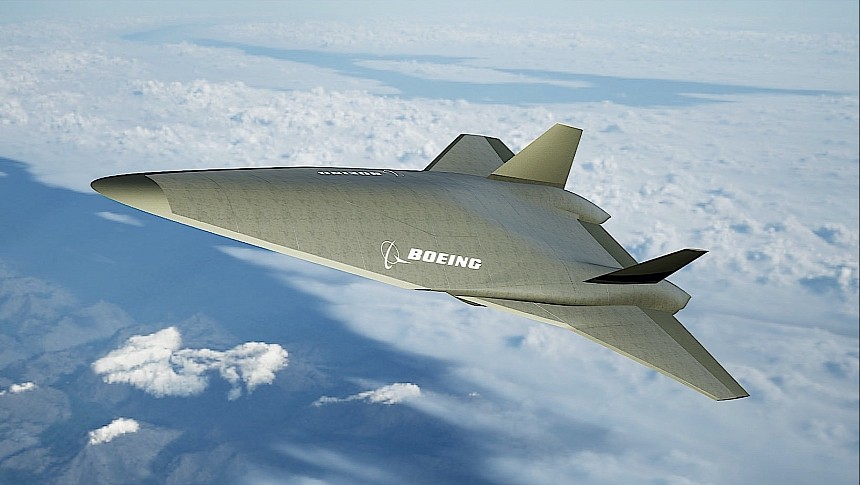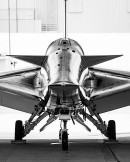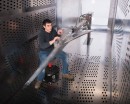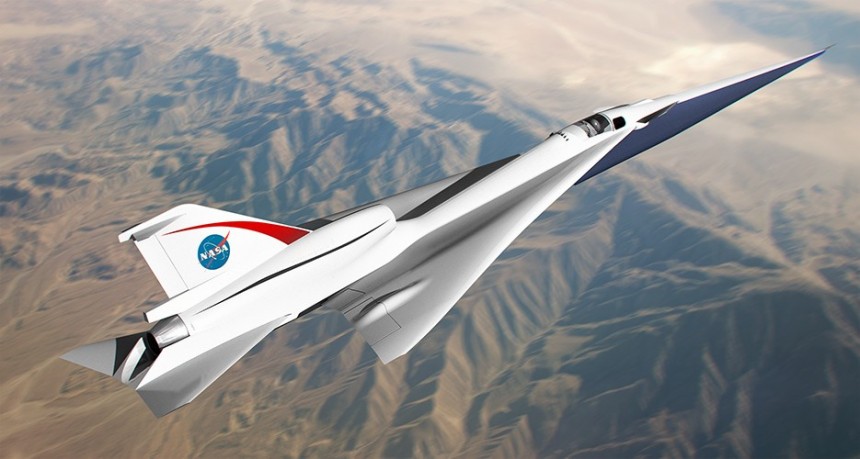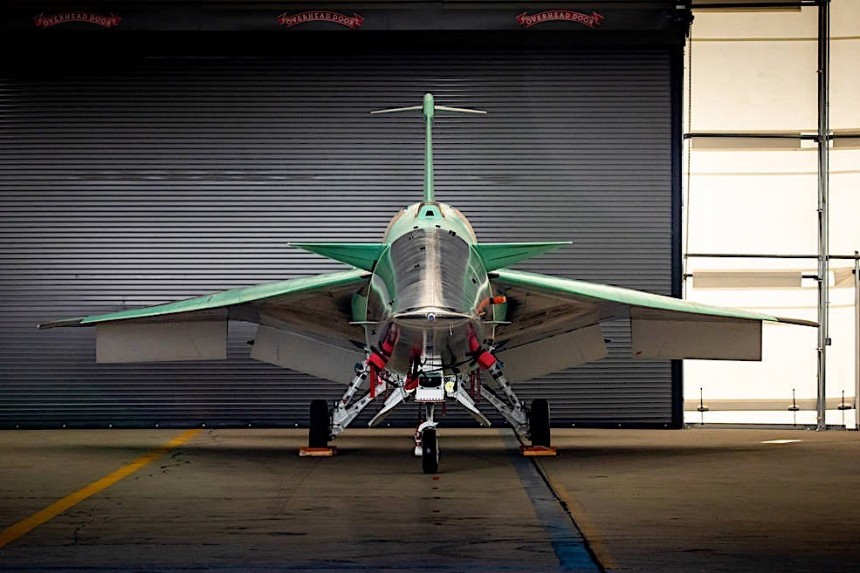It's been a very long time since civilians moved through the air at speeds faster than that of sound. The last time someone did that was back in 2003, when the mighty Concorde took off one last time from London. And some people have been dreaming of going that fast again ever since.
The Concorde, made by the British Aircraft Corporation, was capable of moving passengers through the air at speeds of 1,354 mph (2,179 kph), which is just a little over Mach 2, two times the speed of sound.
That allowed it to complete a trip from London to New York in just under three hours, which is noticeably better than the about eight hours one needs on a regular airplane. In fact, that's blistering fast by any standards. But what if I told you NASA has now begun considering an airplane that could cut even Concorde's time in half?
The American space agency is already knee-deep in a civilian supersonic aircraft project. It's called X-59 Quiet SuperSonic Technology (QueSST), it was announced ever since 2016, and it's currently getting ready to take off for the first time.
The QueSST is something on the lines of a design and technology demonstrator. You see, one of the things that limited Concorde's abilities was the rule some countries, the U.S. included, have in place to prohibit supersonic flight over land, in a bid to avoid the discomfort felt on the ground when the plane breaks through the sound barrier.
The QueSST is meant to explore how new design ideas and technologies could help supersonic airplanes reduce the noise they make, so eventually they could be allowed to fly really fast including over land.
By the end of this year NASA is scheduled to begin testing the plane, which is being put together by Lockheed Martin, by taking it to the sky for the first time. After that is over with and the QueSST proves its airworthiness, flights over populated areas will begin, in an effort to assess the aircraft's impact on communities.
Technically speaking the X-59 is not the precursor of some supersonic passenger aircraft, but the ideas being studied with it just might lead to one or two such machines. Especially given how NASA will not keep the findings from these test flights for itself, but it will share them with both American and international regulators.
Until it does all that, and opens the doors to low-sonic booms over land, NASA is looking into other ways to exploit supersonic travel for passenger needs. More specifically, it tries to see whether a supersonic plane, going as fast as Mach 4 (3,069 mph/4,939 kph), would be something the world and the aviation industry would appreciate.
To get a sense of that the space agency conducted a number of studies at the end of which it reached a very interesting conclusion: there are presently about 50 aerial routes, already being flown by regular airplanes, that could use supersonic jets.
NASA didn't take the X-59 and what may come out of it into account when running these studies, so all the 50 routes are transoceanic and move over either the Pacific or the Atlantic. Sadly, the agency didn't specify what exact routes we're talking about, but for frequent flyers, especially long-haul ones, they are probably not hard to guess.
All of the above is clearly a NASA dream for now, but we all know the agency has a habit of turning a lot of its dreams into reality, and the thought of a Mach 4 passenger airplane is no exception.
So, through a program called Advanced Air Vehicles Program (AAVP) NASA is pushing the idea further, and will call in companies two help. A series of year-long contracts will be awarded to these partners "to develop concept designs and technology roadmaps."
Two teams of companies have already signed up for the project. The first one is led by Boeing, and includes, among others, partners Exosonic, GE Aerospace, Georgia Tech Aerospace Systems Design Laboratory, and Rolls-Royce North American Technologies.
In the opposite corner is the Northrop Grumman-led team, comprising Blue Ridge Research and Consulting, Boom Supersonic, and Rolls-Royce North American Technologies (yes, these guys are playing for both teams).
The tasks set by NASA for the participants include the design of a concept for a supersonic aircraft, meaning first and foremost the airframe, power, propulsion, and thermal management. Most importantly, composite materials capable of supporting supersonic speeds are also to be researched.
NASA did not provide us with a timetable of what should happen when, or at what time in the future we are to expect to see the first results of the project. It did say however that "once the industry engagement phase is completed, NASA and its industry and academic partners will decide whether to continue the research with their own investments."
That allowed it to complete a trip from London to New York in just under three hours, which is noticeably better than the about eight hours one needs on a regular airplane. In fact, that's blistering fast by any standards. But what if I told you NASA has now begun considering an airplane that could cut even Concorde's time in half?
The American space agency is already knee-deep in a civilian supersonic aircraft project. It's called X-59 Quiet SuperSonic Technology (QueSST), it was announced ever since 2016, and it's currently getting ready to take off for the first time.
The QueSST is something on the lines of a design and technology demonstrator. You see, one of the things that limited Concorde's abilities was the rule some countries, the U.S. included, have in place to prohibit supersonic flight over land, in a bid to avoid the discomfort felt on the ground when the plane breaks through the sound barrier.
The QueSST is meant to explore how new design ideas and technologies could help supersonic airplanes reduce the noise they make, so eventually they could be allowed to fly really fast including over land.
Technically speaking the X-59 is not the precursor of some supersonic passenger aircraft, but the ideas being studied with it just might lead to one or two such machines. Especially given how NASA will not keep the findings from these test flights for itself, but it will share them with both American and international regulators.
Until it does all that, and opens the doors to low-sonic booms over land, NASA is looking into other ways to exploit supersonic travel for passenger needs. More specifically, it tries to see whether a supersonic plane, going as fast as Mach 4 (3,069 mph/4,939 kph), would be something the world and the aviation industry would appreciate.
To get a sense of that the space agency conducted a number of studies at the end of which it reached a very interesting conclusion: there are presently about 50 aerial routes, already being flown by regular airplanes, that could use supersonic jets.
NASA didn't take the X-59 and what may come out of it into account when running these studies, so all the 50 routes are transoceanic and move over either the Pacific or the Atlantic. Sadly, the agency didn't specify what exact routes we're talking about, but for frequent flyers, especially long-haul ones, they are probably not hard to guess.
So, through a program called Advanced Air Vehicles Program (AAVP) NASA is pushing the idea further, and will call in companies two help. A series of year-long contracts will be awarded to these partners "to develop concept designs and technology roadmaps."
Two teams of companies have already signed up for the project. The first one is led by Boeing, and includes, among others, partners Exosonic, GE Aerospace, Georgia Tech Aerospace Systems Design Laboratory, and Rolls-Royce North American Technologies.
In the opposite corner is the Northrop Grumman-led team, comprising Blue Ridge Research and Consulting, Boom Supersonic, and Rolls-Royce North American Technologies (yes, these guys are playing for both teams).
The tasks set by NASA for the participants include the design of a concept for a supersonic aircraft, meaning first and foremost the airframe, power, propulsion, and thermal management. Most importantly, composite materials capable of supporting supersonic speeds are also to be researched.
NASA did not provide us with a timetable of what should happen when, or at what time in the future we are to expect to see the first results of the project. It did say however that "once the industry engagement phase is completed, NASA and its industry and academic partners will decide whether to continue the research with their own investments."
